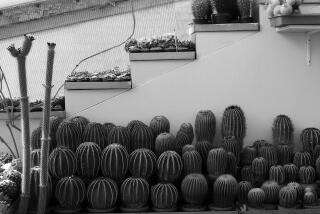Remedy Sought for Vanishing Herbs
PHILADELPHIA — Herbal shampoo and medicine makers could learn something from American Indians about harvesting medicinal and aromatic plants without endangering some vanishing and valuable species.
American Indians gathering plants for herbal remedies take only those they need, and utter songs and chants lamenting the sacrifice and affirming that the plants are being harvested to relieve suffering, said Tis Mal Crow of Speedwell, Tenn., a Western Band Cherokee healer.
“From any one area we limit the amount taken. They are taken only at certain times of year,” Crow said. That’s in contrast with some commercial harvesters who, he said, “go in there with bulldozers and clear off whole hillsides.”
Crow is one of 10 members of a Native American Elder Circle who take part in a U.S. Fish and Wildlife Service Medicinal Plant Working Group discussing ways to protect threatened plants. The group also includes representatives from industry, government, academia and environmental organizations.
“Plants that our grandfathers’ grandfathers respected and protected for future generations are no longer available to us,” said Crow, author of “Native Plants, Native Healing.” He spoke recently at a symposium the working group helped organize on Industrial Leadership for the Preservation of Medicinal and Aromatic Plants.
North American environments from alpine tundra to prairie grasslands, coastal salt marshes and tropical rain forests have some 20,000 plant species, the working group reported in December 2000. At least 175 species are marketed for use in over-the-counter remedies and supplements in the $3 billion U.S. medicinal herb market.
Many plants are collected from the wild in large quantities. For example, about 65 million goldenseal plants and 34 million ginseng plants a year have been harvested from eastern U.S. forests in recent years, according to the report.
The two-day symposium included pharmaceutical, cosmetic, vitamin and herbal product makers, academics, farmers and government representatives.
“We are interested in creating partnerships with as diverse a group as possible and bringing together as many interest groups as possible,” said Julie Lyke, a U.S. Fish and Wildlife Service biologist.
Some plants are plentiful enough to harvest without concern, said Michael McGuffin, president of the American Herbal Products Assn., a Silver Spring, Md., trade group.
“Saw palmetto is harvested in the wild, but it’s estimated that there are 4 million acres of it,” McGuffin said. “Black cohosh is one we are concerned about. The root is the part used. End of plant.”
One presentation involved some successful efforts to cultivate black cohosh, an 8-foot perennial with stems and roots used to treat menstrual and digestive problems and rheumatism.
But plants such as goldenseal root, often used in combination with vitamin C; American ginseng, marketed as an energizer and immune stimulant; and echinacea, also sold as an immune stimulant, are considered at risk of extinction, Crow and McGuffin said.
Herbal product manufacturers’ demand for plants can end up preserving natural habitats, such as rain forests, said Dominique N. Conseil, president of Aveda, a maker of plant-based shampoos, cleansers and cosmetics.
Conseil said that can be the result if companies show local people how to harvest herbal products that are more profitable than logging or clearing the land for other uses.
“Communities need to have a source of revenue. It’s about developing a source of revenue that preserves the wild,” Conseil said. “If they can make a living from the environment without destroying it, when that works, it’s ideal.”
For some plants, the effort comes too late. Of 200 species discovered by Meriwether Lewis and William Clark on their expedition of 1803 through 1806, it isn’t known if 30% still exist, said Ara DerMarderosian, a professor of pharmacognosy, the study of drugs from natural sources, at the University of the Sciences in Philadelphia.
One of the working group’s goals is to catalog American plants, DerMarderosian noted. “We hope they are still there. There’s a lot of places you’ll go and find a parking lot.”
More to Read
Sign up for Essential California
The most important California stories and recommendations in your inbox every morning.
You may occasionally receive promotional content from the Los Angeles Times.










